
Many people mistakenly believe that alcohol used in cooking evaporates, leaving behind nothing but flavor. The truth is that the amount of alcohol that remains in your pastries, cakes, pies and other desserts after cooking ranges from 5 to 85 percent, depending on the amount and type of alcohol used and the cooking time and process.
Baking Time
Sweet and savory baked goods made with alcohol and baked for 15 minutes contain 40 percent of the original alcohol content. Although longer cooking times reduce the amount of alcohol in the food, after baking for 1 hour, it still contains 25 percent of the alcohol. Food baked 2 ½ hours holds about 5 percent of the original alcohol used.
Pan Size
The size of the pan used for cooking affects the amount of alcohol that remains in the food, according to Colorado State University Extension Specialist Shirley Perryman. Cakes, breads and other items baked in a smaller pan retain more of alcohol, because the smaller surface area of the food allows less room for evaporation. Try using a larger baking pan to retain the characteristic flavor while giving the alcohol a chance to evaporate in the oven.
Reducing Alcohol Content
Use alcohol sparingly in baked goods that will be consumed by those who must restrict their alcohol intake. A sprinkle over the top is likely to evaporate in cooking, but if your recipe calls for more than a tablespoon or two, consider light or nonalcoholic versions that add flavor to reduce or eliminate the alcohol. Fruit juice or concentrated frozen fruit juice, such as orange juice, adds a burst of flavor without adding alcohol.
Substitutions
Although omitting the alcohol in a recipe may compromise its flavor, there are other ways to enhance flavor without using alcoholic beverages. Substitute just shy the amount of apple, grape or orange juice for wine or liqueurs in baked goods. Adding a dash of lemon juice or vinegar replaces the tartness alcohol imparts. Other options include flavored extracts, such as those for brandy or rum, for holiday confections.
Considerations
Check the menu carefully when dining out if alcohol consumption is an issue. Ask about the use of alcohol in sauces accompanying baked goods, as not all ingredients are listed on the menu. When serving guests, always disclose the use of alcohol, especially when serving small children. While the alcohol content may seem inconsequential, little bodies may react the small amounts.
Related Articles

How Long Does It Take Alcohol to Cook ...
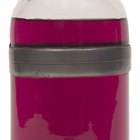
Alcohol Content of Cooking Sherry

Is it Safe to Cook With Beer?

Can I Use Sherry Instead of Red Wine in ...

Is There Still Alcohol in Beer-Boiled ...

How to Calculate Portions

What Is the Average Cost of an Open Bar ...

Can You Substitute Vegetable Shortening ...
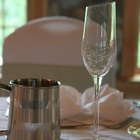
How Much Is a Single Serving Size of a ...

How to Make Teriyaki Sauce

How to Use a Probe Cooking Thermometer

How to Hire Party Servers

Calories in Rum Vs. Vodka

Cooking Time for Box Brownies in ...

Does Brandy Freeze?

How to Figure Costs for a Banquet
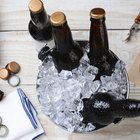
What Happens to the Alcohol ...
What Is the Difference Between 80 & 100 ...
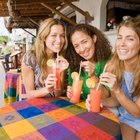
Alternatives to Drinking Alcohol
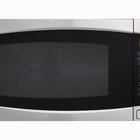
How to Convert Stovetop Recipes to ...
References
Writer Bio
Nannette Richford is an avid gardener, teacher and nature enthusiast with more than four years' experience in online writing. Richford holds a Bachelor of Science in secondary education from the University of Maine Orono and certifications in teaching 7-12 English, K-8 General Elementary and Birth to age 5.
Photo Credits
Digital Vision./Photodisc/Getty Images